
views
- Lay a 4–8 ft (1.2–2.4 m) carpenter’s level on the floor. If the bubble doesn’t sit in the middle, the floor doesn’t touch the bottom of the level, or the level teeters, it’s sloped.
- Put a laser level in the middle of the room, then stand a wooden plank up on one end. Move the wood around the room, and mark where the laser hits it to see if it’s level.
- Get a perfectly round object and put it on the ground to see if it rolls. Repeat against all the walls, and in the middle of the floor. If it rolls, your floor isn’t level.
Using a Bubble Level
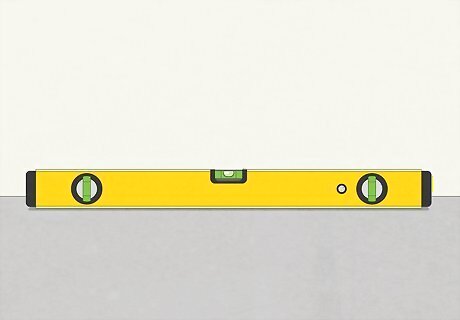
Set a 4–8 ft (1.2–2.4 m) spirit level horizontally on the floor. Pick a spot in the middle of the floor or against one of the walls. Lay a spirit level horizontally, so that the bubble is on top. Check the level by laying it on a surface, noting where the bubble in the middle is, flipping it over one end, and seeing if it’s in the same place. If you only have a short level, lay a 4–8 ft (1.2–2.4 m) long board on the floor and set the level on top of it. The longer the board, the more accurate your measurement. This method will work on any type of floor.
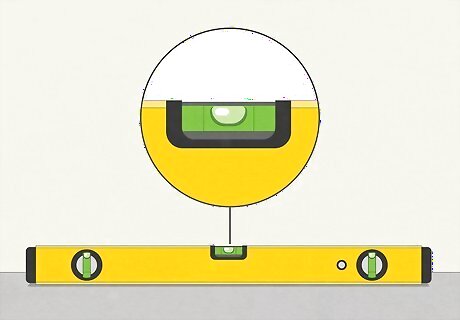
Look where the bubble rests to see if the floor is sloping. If the bubble isn’t in the lines in the middle, the floor isn’t level. When the bubble touches the sides of the lines, it’s off about 1 inch (2.5 cm) per 4 feet (1.2 m), sloping down in the opposite direction of the bubble. The further the bubble is to the side of one of the lines, the more sloped the floor is. For example, if 3/4 of the bubble is in between the 2 lines and the other 1/4 is outside of 1 of the lines, the floor has a minor slope. If the bubble is all the way to 1 side, the floor has a major slope.
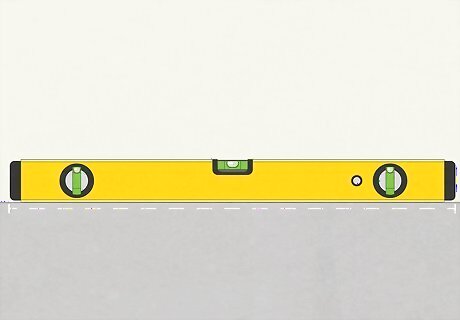
Check for gaps and bumps underneath the level. Get down on the floor by the level and check if the bottom edge rests completely flush on the floor. Measure the depth of the dip from the level, or check the slope by lifting one end of the level until the bubble is centered and measuring the height of the raised end. Raised spots in your floor cause the level to teeter back and forth. Once again, center the bubble in the level by supporting one side, then measure the distance from the level to the floor. Measure from the end of the level to the point it rests on to get the length for the slope. If you’re planning on leveling your floor, mark any dipping spot with a piece of tape. Find the slope of the floor by dividing the length of the level by the height you measured. If you don’t have a long level, check the grade with a straight edge (like a plank) at least 6 feet (1.8 m) long.
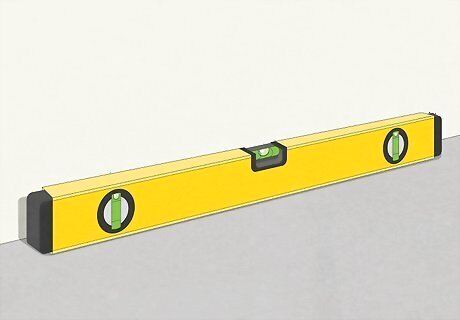
Repeat the process in several spots. Place the level near each edge of each wall and in the middle. Read the bubble and look for gaps to make sure the floor is level all over. If you have a shorter level (and no supporting beam) check several spots. For instance, if you’re using a 4 ft (1.2 m) level, it check 2 different spots near each edge of the floor and at least 2 spots in the middle.
Checking with a Laser Level
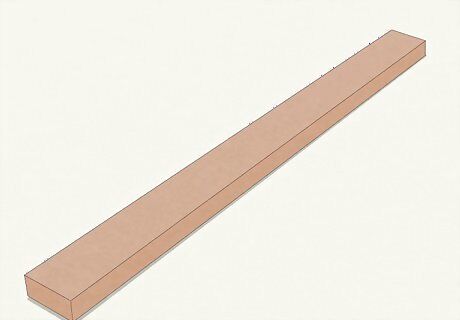
Get a tall piece of wood with its ends cut at 90º to make markings on. Use a long piece of wood, such as a 2 in × 4 in (5.1 cm × 10.2 cm) plank, of any length that is comfortable for you to hold standing up. Cut the ends completely straight. You can use this method for any type of floor. 2 in × 4 in (5.1 cm × 10.2 cm) boards from a hardware store almost always come with straight cut ends.
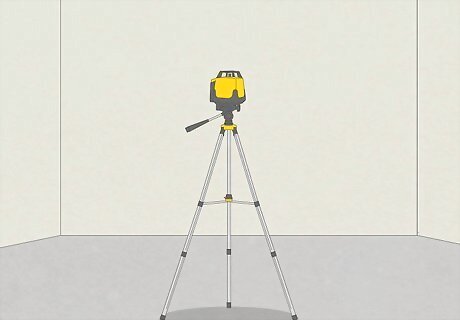
Place a laser level in the middle of the floor and turn it on. Set a tripod-mounted laser level approximately in the center of the floor. Press the laser level’s ON button to project the laser beam. You can get a laser level at a home improvement center or online for a starting price of around $40 USD. If you don’t want a specialized tripod, use a standard camera mount tripod, which you can get online for about $12 USD. Many laser levels project the laser beam 360 degrees, so you don’t have to move the laser at all to check levelness all over the floor. Others might require you to turn the laser to project it in different directions as you work.
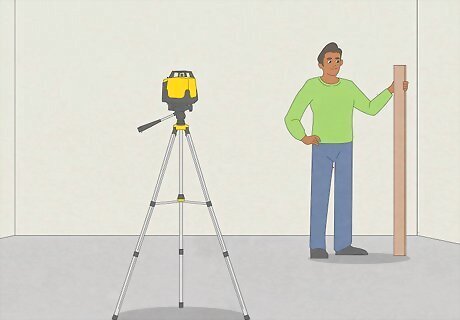
Hold the wood straight up and down, perpendicular to the floor. Stand near one corner of the floor and hold the piece of wood up straight up next to you. Position it so that the broadest side is facing the laser. Keep the end of the plank completely flat on the floor.

Set the laser height 6 in (15 cm) below the top of the plank and mark it. Adjust the height so the laser hits approximately 6 in (15 cm) lower than the top of the piece of wood you’re marking on. Use a pencil to carefully trace over where the laser hits the wood. This gives you plenty of room to make markings higher than the laser if the floor is uneven in places.
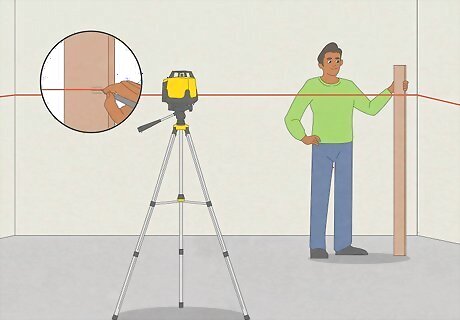
Mark the laser’s height on the wood all the way around the room. Move the wood to each corner around the center of the room, and make a mark where the laser beam hits it. This shows you whether other parts of the room are higher or lower than the first spot you marked. Laser levels are self-leveling, meaning the laser will be at the same height all around the room, so you don’t need to worry about adjusting the laser at all. Measure the offset from the first line at each point, then write it down on tape and stick it to the spot you checked from.
Using a Round Object
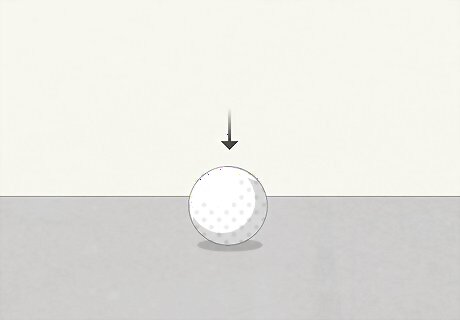
Set a marble, golf ball, or metal bearing on your floor. One of the easiest ways to check if a floor is level is with a golf ball test. Get a perfectly round object (or several), then set it on the floor. If the ball continues to naturally roll to one spot, that’s a dip. If there’s a spot it won’t stay on, that’s a peak. If the object rolls, the speed at which it rolls indicates how great the slope of the floor is and in which direction the floor slopes. For example, if it rolls slowly to the left, it indicates that the floor slopes slightly to the left. This method won’t work with carpeted or tiled floors. The floor must be hard and smooth so that the object can roll, such as a concrete, hardwood floor, or linoleum floor.

Check different spots around the room for sloping. Move around to the different edges of the room and set the round object down. Watch to see if it rolls and take note of the direction and how fast it goes. This is a very basic way to find general directions of slopes and estimate how serious they are. However, if you find that the floor is not level, check it using a bubble level or laser level to get more precise indications of where the slopes are.




















Comments
0 comment